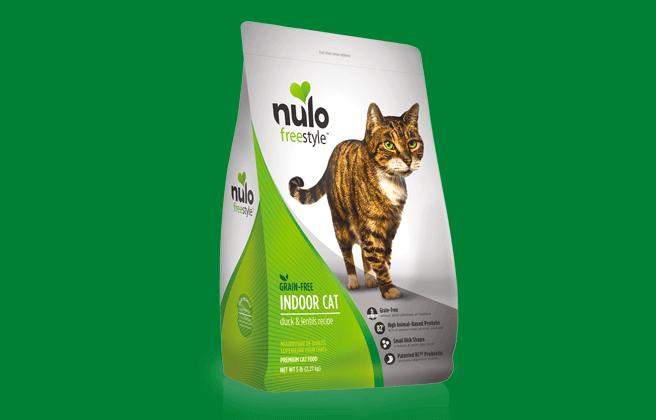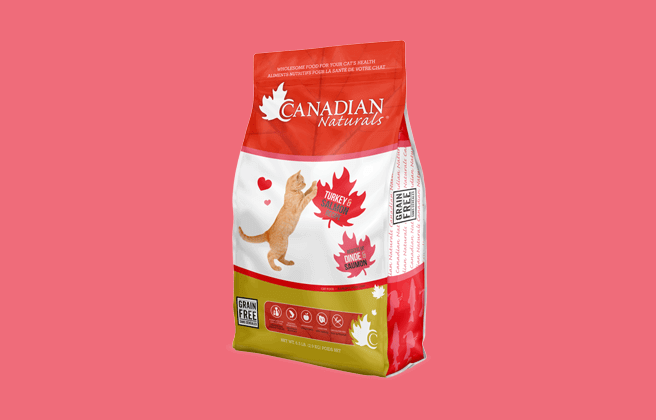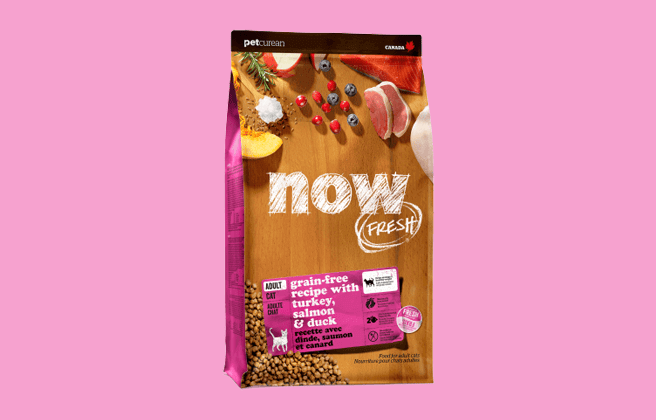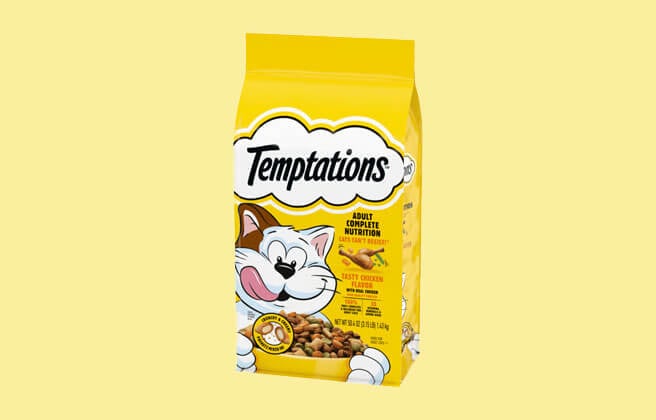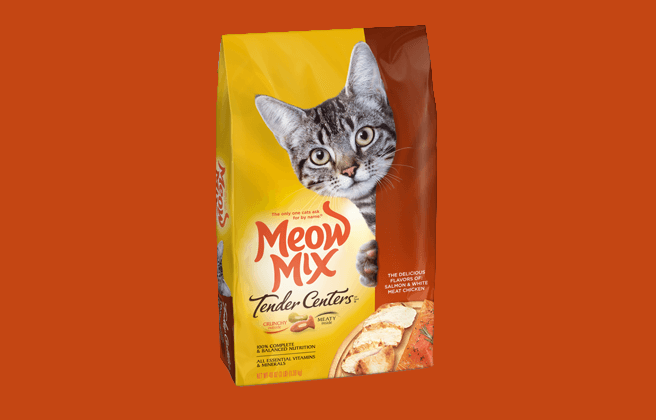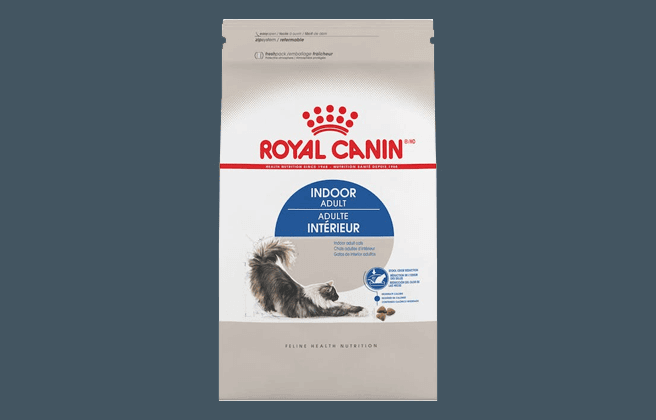
Our Verdict
Royal Canin dry product range is made of 25 recipes which all receive the Cat Food Advisor rating, 2 stars.
Royal Canin dry food has a great product variety which can be tailored to the cat’s individual needs, whether they live indoors or are more adventurous explorers outside.
Pros
- Primarily made from animal ingredients
- Free from artificial colors and flavors
- Unique tailored formulas for individual needs
Cons
- Contains animal by-products
The table below shows each recipe in the range including our rating and the AAFCO nutrient profile: Growth (kitten), Maintenance (adult), All Life Stages, Supplemental or Unspecified.
| Product line | Rating | AAFCO |
|---|---|---|
| Royal Canin Appetite Control Care Dry Cat Food | 2 | M |
| Royal Canin Savor Selective Dry Cat Food | 2 | M |
| Royal Canin Kitten Spayed/Neutered Dry Cat Food | 2 | G |
| Royal Canin Bengal Adult Dry Cat Food | 2 | M |
| Royal Canin Maine Coon Kitten Dry Cat Food | 2 | G |
| Royal Canin Weight Care Adult Dry Cat Food | 2 | M |
| Royal Canin Sensitive Digestion Dry Cat Food | 2 | M |
| Royal Canin Fit And Active Dry Cat Food | 2 | M |
| Royal Canin Kitten Dry Cat Food | 2 | G |
| Royal Canin Mother & Babycat Dry Cat Food | 2 | G |
| Royal Canin Maine Coon Adult Dry Cat Food | 2 | M |
| Royal Canin Persian Adult Dry Cat Food | 2 | M |
| Royal Canin Ragdoll Adult Dry Cat Food | 2 | M |
| Royal Canin Persian Kitten Dry Cat Food | 2 | G |
| Royal Canin Urinary Care Dry Cat Food | 2 | M |
| Royal Canin Digestive Care Dry Cat Food | 2 | M |
| Royal Canin Hairball Care Dry Cat Food | 2 | M |
| Royal Canin Dental Care Dry Cat Food | 2 | M |
| Royal Canin Siamese Adult Dry Cat Food | 2 | M |
| Royal Canin Indoor Adult Dry Cat Food | 2 | M |
| Royal Canin Indoor Long Hair Dry Cat Food | 2 | M |
| Royal Canin Indoor 7+ Dry Cat Food | 2 | M |
| Royal Canin Hair & Skin Care Dry Cat Food | 2 | M |
| Royal Canin American Shorthair Adult Dry Cat Food | 2 | M |
| Royal Canin Aging Spayed/Neutered 12+ Dry Cat Food | 2 | M |
Save up to 35%
with Autoship
See discount in cart
Recipe and Label Analysis
Royal Canin Indoor Adult Dry Cat Food was selected to represent the other products in the line for a detailed recipe and nutrient analysis.
Label and nutrient data below are calculated using dry matter basis.
Royal Canin Indoor Adult Dry Cat Food
Estimated Dry Matter Nutrient Content
Protein
Fat
CarbsCarbohydrates
Chicken meal, corn, brewers rice, corn gluten meal, wheat, chicken fat, wheat gluten, natural flavors, brown rice, pea fiber, rice hulls, dried plain beet pulp, vegetable oil, calcium sulfate, grain distillers dried yeast, sodium silico aluminate, fish oil, potassium chloride, fructooligosaccharides, sodium pyrophosphate, psyllium seed husk, salt, dl-methionine, choline chloride, egg product, calcium carbonate, vitamins [dl-alpha tocopherol acetate (source of vitamin E), l-ascorbyl-2-polyphosphate (source of vitamin C), niacin supplement, biotin, riboflavin supplement, d-calcium pantothenate, thiamine mononitrate (vitamin B1), pyridoxine hydrochloride (vitamin B6), vitamin A acetate, vitamin B12 supplement, folic acid, vitamin D3 supplement], taurine, trace minerals [zinc oxide, zinc proteinate, ferrous sulfate, manganous oxide, manganese proteinate, copper sulfate, calcium iodate, sodium selenite, copper proteinate], l-carnitine, rosemary extract, preserved with mixed tocopherols and citric acid.
Fiber (estimated dry matter content) = 15%
Red denotes any controversial items
Ingredients Analysis
The first ingredient is chicken meal. Chicken meal is considered a meat concentrate and contains nearly 300% more protein than fresh chicken.
The second ingredient is corn. Corn is an inexpensive and controversial cereal grain. And aside from its energy content, this grain is of only modest nutritional value to a cat.
The third ingredient is brewer’s rice. Brewers rice is a cereal grain by-product consisting of the small fragments left over after milling whole rice. Aside from the caloric energy it contains, this item is of only modest nutritional value to a cat.
The fourth ingredient is corn gluten meal. Gluten is the rubbery residue remaining once corn has had most of its starchy carbohydrate washed out of it. Although corn gluten meal contains 60% protein, this ingredient would be expected to have a lower biological value than meat.
And less costly plant-based products like this can notably boost the total protein reported on the label – a factor that must be considered when judging the actual meat content of this cat food.
The fifth ingredient is wheat. Like corn, wheat is an inexpensive and controversial cereal grain. And aside from its energy content, this grain is of only modest nutritional value to a cat. For this reason, we do not consider wheat a preferred component in any cat food.
The sixth ingredient is chicken fat. Chicken fat is obtained from rendering chicken, a process similar to making soup in which the fat itself is skimmed from the surface of the liquid. Chicken fat is high in linoleic acid, an omega-6 fatty acid essential for life. Although it doesn’t sound very appetizing, chicken fat is actually a quality ingredient.
The seventh ingredient is wheat gluten. Gluten is the rubbery residue remaining once wheat has had most of its starchy carbohydrate washed out of it. Compared to meat, glutens are inferior plant-based proteins low in some of the essential amino acids cats need for life.
This inexpensive plant-based ingredient can significantly boost the total protein reported on the label – a factor that must be considered when judging the actual meat content of this cat food.
The eighth ingredient is natural flavor. Flavors doesn’t give us much information about the particular ingredients included in this cat food for flavoring purposes. We’re pleased that the flavorings used are natural, but more details are required to give any further information about these natural flavoring ingredients. Flavorings are used to make the foods more appealing and tasty for our cats.
From here the list goes on to include a number of other items. But to be realistic, ingredients located this far down the list (other than nutritional supplements) are not likely to affect the overall rating of the product.
This recipe receives a 2-star rating.
Save up to 35%
with Autoship
See discount in cart
Nutrient Analysis
Based on its ingredients alone, Royal Canin Indoor Adult Dry Cat Food looks like a below-average dry product.
The dashboard displays a dry matter protein reading of 28.6%, a fat level of 11.7% and an estimated carbohydrate level of 51.7%, alongside a fat-to-protein ratio of 41%.
As a group, the brand features an average protein content of 33% and a mean fat level of 14.4%. Together these figures suggest a carbohydrate content of 44.6% for the overall product line, alongside a fat-to-protein ratio of 44%.
This means the Royal Canin wet product line contains near-average protein, above-average carbs and near-average fat when compared to typical dry cat food.
Final Word
Royal Canin is a fairly expensive brand, however this is a reflection more on the product analysis which is carried out, rather than the ingredients.
(Royal Canin products are more of a veterinary precision approach, even for their “healthy cat” recipes. Their foods deliver the functions that they claim, but the ingredients used are not comparable to the natural “food” ingredients found in other brands)
Has Royal Canin cat food been recalled in the past?
Yes, Royal Canin has been recalled a few times in the past 15 years.
The last one was in January this year and was due to a mislabelling issue. For more information, visit our recall page.
In 2007, specific varieties of Royal Canin dry dog and cat foods were recalled because of potential melamine contamination.
The affected foods were;
- Royal Canin Veterinary Diet Canine Early Cardiac EC 22 dry dog food
- Royal Canin Veterinary Diet Canine Skin Support SS21 dry dog food
- Royal Canin Veterinary Diet Feline Hypoallergenic HP23 dry cat food
- Sensible Choice Chicken Meal & Rice Formula Senior dry dog food
- Sensible Choice Lamb Meal & Rice Formula Puppy dry dog food
- Sensible Choice Lamb Meal & Rice Formula Adult dry dog food
- Sensible Choice Lamb Meal & Rice Formula Senior dry dog food
- Sensible Choice Rice & Catfish Meal Formula Adult dry dog food.
For more details, visit the Dog Food Advisor recall page.
In 2006, the following products were recalled as they contained too much vitamin D:
- Royal Canin Veterinary Diet Canine Urinary SO dog food, 13.6 oz. cans, Codes 511A/B and 521 A/B, best by March 2007
- Royal Canin Veterinary Diet Canine Urinary SO dog food, 13.6 oz. cans, Code 525A, best by June 2007
- Royal Canin Veterinary Diet Canine Low Fat LF dog food, 13.6 oz. cans, Code 526A/B, best by June 2007
- Royal Canin Veterinary Diet Canine Calorie Control CC in Gel dog food, 12.7 oz. cans, Code 515B, best by April 2007
- Royal Canin Veterinary Diet Canine Calorie Control CC in Gel dog food, 12.7 oz. cans, Code 528A, best by July 2007
- Royal Canin Veterinary Diet Feline Sensitivity VR cat food, 5.8 oz. cans, Code 518A, best by May 2007
- Royal Canin Veterinary Diet Feline Calorie Control CC cat food, 5.8 oz. cans, Code 449A, best by November 2006
- Royal Canin Veterinary Diet Feline Calorie Control CC cat food, 5.8 oz. cans, Code 451A, best by December 2006
- Royal Canin Veterinary Diet Feline Calorie Control CC cat food, 5.8 oz. cans, Code 515A, best by April 2007
- Royal Canin Veterinary Diet Feline Renal LP cat food, 3 oz. pouches, Codes 519B and 522B, best by September 2006
- Royal Canin Veterinary Diet Feline Renal LP cat food, 3 oz. pouches, Code 526A, best by October 2006
- Royal Canin Veterinary Diet Feline Renal LP cat food, 3 oz. pouches, Codes 541A and 543A, best by February 2007.
You can view a complete list of all cat food recalls since 2021 here.
To stay on top of any cat food product recalls, sign up for our free email alerts, here.
About
Royal Canin was started back in the 1960s by veterinary surgeon Jean Cathary who lived in France.
The worldwide headquarters is in Southern France, and U.S. products are manufactured in company-owned plants in Missouri, South Dakota and Canada.
Sources
Best cat foods
We uphold the highest editorial standards when creating the authoritative content pet parents rely on and trust.
Every piece of clinical content on the Cat Food Advisor is reviewed by our certified Veterinary Advisory Board, which consists of licensed veterinarians and medically certified specialists.
Our reviews are completely independent; we are not paid by any pet food company to promote their products favorably. We do not accept money, gifts, samples or other incentives in exchange for special consideration. For more information see our Disclaimer & Disclosure page.






